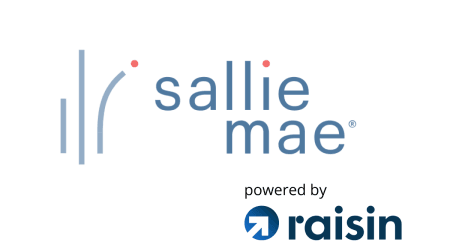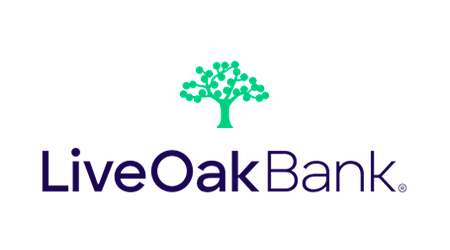-
Commitment to our readers
18 years
Helping you save money
Reviewed
by experts
Cited by
major publications
Finder maintains full editorial independence to ensure for our readers a fair assessment of the products, brands, and services we write about. That independence helps us maintain our reader's trust, which is what keeps you coming back to our site. We uphold a rigorous editorial process that ensures what we write and publish is fair, accurate, and trustworthy — and not influenced by how we make money.
We're committed to empowering our readers to make sound and often unfamiliar financial decisions.
We break down and digest information information about a topic, product, brand or service to help our readers find what they're looking for — whether that's saving money, getting better rewards or simply learning something new — and cover any questions you might not have even thought of yet. We do this by leading with empathy, leaning on plain and conversational language that speaks directly, without speaking down.
What is a CD’s maturity date?
A CD’s maturity date is when your CD’s term is over. Most CD terms are expressed in months, such as 12, 18 or 72 months. When you open your CD, your bank will tell you when your CD matures. After this date, you can withdraw your funds and interest earned without early withdrawal penalties.
About 30 days before your CD matures, your bank will contact you. Then, there’s something called a CD grace period, which is usually 10 to 14 days before the account’s maturity date. Within the grace period, you can make changes or decisions with your CD and inform your bank of your plans with your soon-to-be-matured CD.
What can I do with my CD at maturity?
Within a week or so of your CD’s maturity date, you have two main routes:
- Renew the CD for a similar term.
- Cash out and close the account. Inform your bank where you want it to send the CD funds, such as to a savings or checking account. Some banks also offer to send a check.
If you do nothing at your CD’s maturity date, your bank typically renews it for the same or a similar term. For example, if Chase Bank doesn’t hear from you by the time your CD hits its maturity date, it automatically renews for the same term with a new maturity date.
3 places to put your CD earnings
Now that your CD term is over, it’s time to decide what you want to do with your funds.
1. Renew for a higher rate
With your old CD closed, you can reinvest your deposit and earned interest into another CD. The great thing about fixed-rate CDs is that the rate won’t change during the term.
Sallie Mae CDs through Raisin
Lock in strong CD rates as high as 4.3% APY on term lengths you'll only find through Raisin. Plus, you only need $1 to open and you have the option of opening a no-penalty CD.
- 4.30% APY for 14 months.
- $1 minimum deposit.
- Two no-penalty CD options
- Up to $1,000 bonus for new customers with qualifying deposits using promo code EASY. T&C apply.
2. Put earnings in a high-yield savings account
CDs are great for guaranteed interest earnings, but you don’t exactly have “free” access to the funds until the maturity date. If you want your savings to continue to grow while having a little more access to those funds, consider a high-yield savings account. High-yield savings accounts are simply regular savings accounts, but they have very high APYs.
Live Oak Personal Savings
Earn and save more with competitive APY.
- 4.10% APY.
- $0 monthly maintenance and no hidden fees.
- $0 minimum balance to open
3. Invest your earnings
With a matured CD and fresh earnings, you can consider investing those funds. There are alternative investments, retirement accounts, exchange-traded funds (ETFs), stock trading and so much more. There are also brokerage and trading apps that guide you through investing.
SoFi Invest® - Active and Robo Investing
Zero-commission stocks, ETFs and options, with no options per-contract fees. Plus, a robo-advisor and access to financial planners.
- Trade stocks, options, ETFs, mutual funds, alternative asset funds.
- $0 commission on stocks, ETFs and options, with no options contract fees.
- Access to financial planners and automated investing.
Paid non-client promotion. Finder does not invest money with providers on this page. If a brand is a referral partner, we're paid when you click or tap through to, open an account with or provide your contact information to the provider. Partnerships are not a recommendation for you to invest with any one company. Learn more about how we make money.
Finder is not an advisor or brokerage service. Information on this page is for educational purposes only and not a recommendation to invest with any one company, trade specific stocks or fund specific investments. All editorial opinions are our own.
Can I withdraw CD funds before maturity?
You can, but it will likely mean losing some earned interest.
Banks and credit unions may allow full or partial CD withdrawals before your maturity date, but typically, some penalties come along with that: early withdrawal penalties.
These penalties aren’t normally paid out of pocket, though. Most of the time, the bank deducts some earned interest, such as 90 days to a full year of earned interest. If you didn’t earn enough interest to cover the penalty, the bank may take the difference out of your deposit.
There are no-penalty CDs if you’d like the ability to withdraw funds before a maturity date. However, once you withdraw your funds from a no-penalty CD, you typically get only one full withdrawal, and this action closes the account.
If I renew my CD, will the rate be the same?
It’s possible to renew a CD at the exact same rate, but it’s not very likely. CD offerings change all the time. This month, you may see a CD with a 6-month term at a 5% APY, and the next month, that same bank may lower that offer to 4%. When you renew a CD, your rate may be lower, higher or the same. Most of the time, the bank doesn’t promise any specific renewal rates.
Banks and credit unions can change their CD rate offerings as often as they wish. But they can’t adjust your fixed-rate CD’s current rate. If you have a fixed-rate CD open right now, the rate will not change.
Bottom line
CDs are considered a safe and effective way to grow your savings. With a fixed-rate CD, the interest rate doesn’t change for the entire term, and since CDs are deposit accounts, they’re protected under FDIC or NCUA insurance.
But if you’d rather have unfettered access to your cash, consider savings accounts or other investment options.
Frequently asked questions
What is the biggest negative of putting your money in a CD?
The biggest downside with CDs is that you don’t have easy access to your funds. Your cash is locked in the deposit account until the CD matures. While you can withdraw the funds before the maturity date, you’ll likely incur early withdrawal penalties.
Another downside is also a CD’s upside: Fixed-rate CDs have non-adjustable rates. This feature is good when rates are dropping but bad when rates are rising. If interest rates increase, your CD’s rate won’t rise with the market.
Can you ever lose money on a CD?
Probably not. When you open a CD, your interest earnings are guaranteed as long as you leave the funds in the account and don’t withdraw early. Aside from early withdrawal penalties, the only other real “loss” is potential opportunity cost, such as choosing to invest your money in a 2% APY CD when your savings account has a 5% APY right now.
Ask a question
More guides on Finder
-
Are CDs Worth It?
CDs are generally safe, low-risk way to earn interest on your savings. See how they stack up in today’s current market.
-
Callable CDs: What They Are and How They Work
A callable CD can be terminated before its maturity date, unlike regular CDs. However, callable CDs tend to have higher APYs as a tradeoff.
-
7 Best CD rates in Texas in August 2025
The highest CD rates in Texas are from Ciera Bank, Quontic Bank, Susser Bank, Ally Bank and more. See the full list here.
-
6 Best CD Rates in Florida in August 2025
Some of the highest CD rates in Florida are from Quontic Bank, Bethpage Federal Credit Union, First Internet Bank and more. See the full list here.
-
7 Best CD Rates in Michigan in August 2025
Some of the highest CD rates in Michigan are from Flagstar Bank, Quontic Bank, First Internet Bank, Ally Bank and more. See our full list here.
-
Best No-Penalty CD Rates of 2025
Savings rates are dropping, but you can lock in a high-APY CD without penalties for early withdrawal. Sallie Mae and Marcus CDs top our list.
-
10 best CD rates today for August 2025
Finding the best CD rate is vital to ensuring that your savings balance grows to the maximum amount possible in the shortest time.
-
Ponce Bank CD rates review
High rates on a variety of terms with low opening deposit requirements.
-
Sallie Mae CD rates: Lower your opening deposit with Raisin
Raisin’s Sallie Mae CDs offer a big APY for a small opening deposit.
-
Certificate of Deposit Calculator: See How Fast Your Money Grows
With the help of a CD calculator, you get a better idea of how your certificate of deposit will grow over time.




